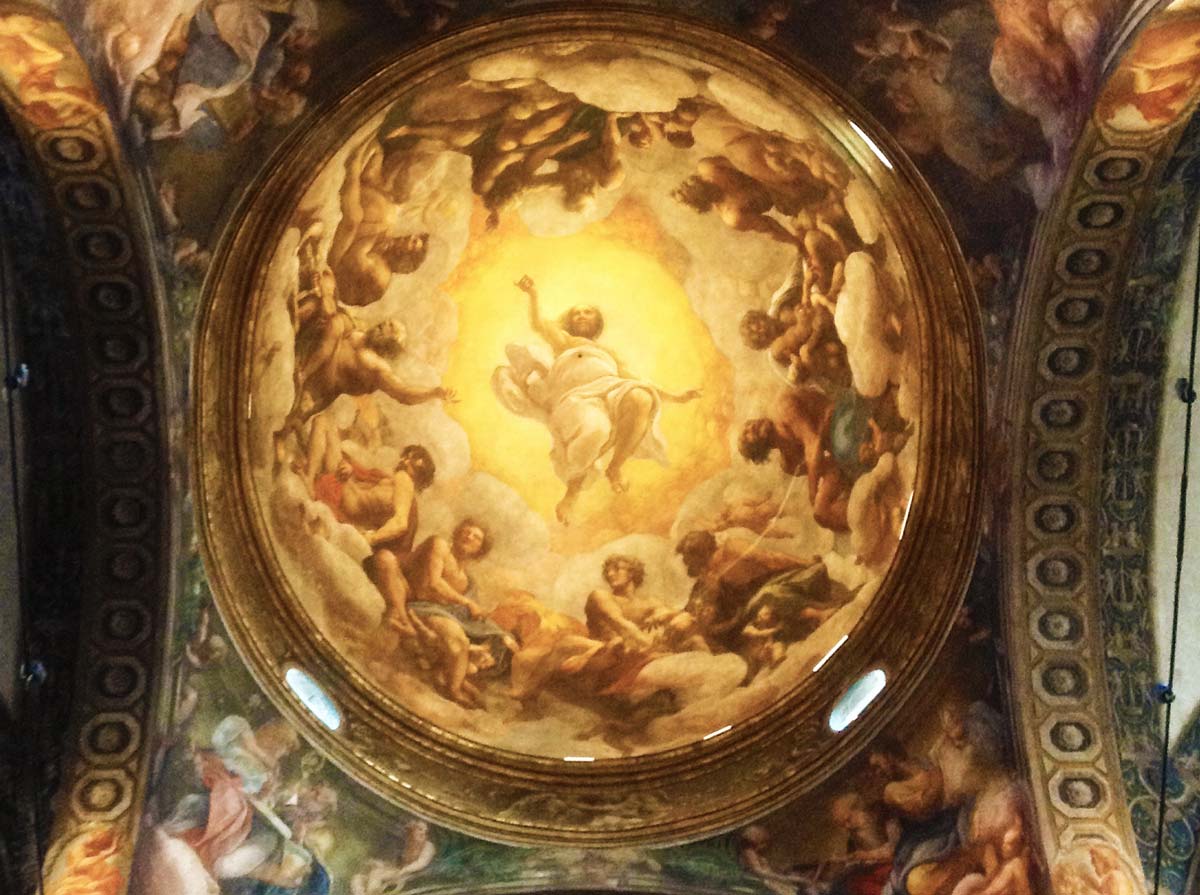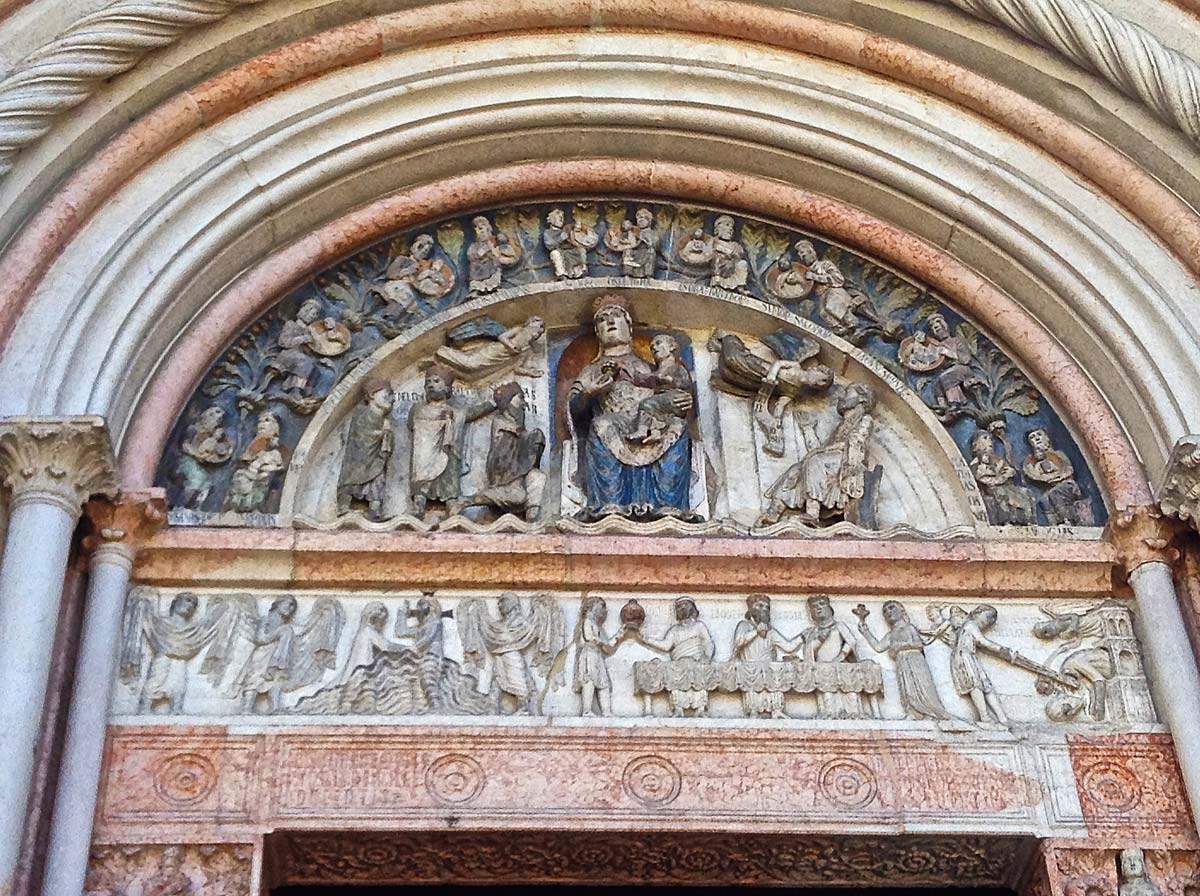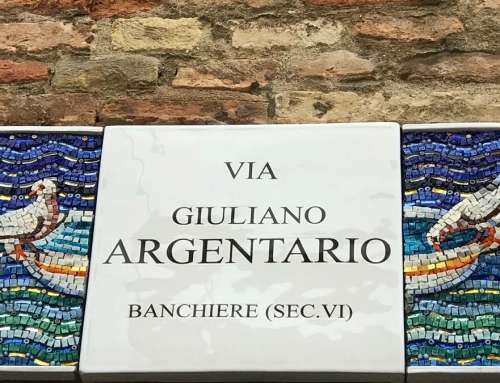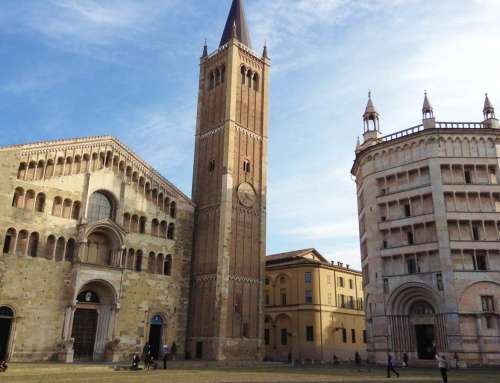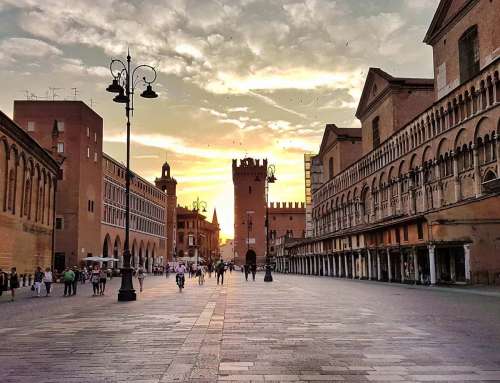A day in Parma will allow you to be exploring all of the most important attractions and glorious heritage of the town, from stunning Correggio and Parmigianino Renaissance frescoes down to medieval Cathedral and lavish Parma Dukes Palaces.
In his masterpiece The Chartreuse of Parma, writer Stendhal called the city ‘as precious as a pearl’. And this is not a chance: you will feel literally surrounded by vibrant notes from Maestro Giuseppe Verdi opera works, as well as tempted to be treating yourself with special, delicious tastes of local foodstuffs, having been earning the city the title of UNESCO city for gastronomy in year 2015.
Stops will be arranged at the most popular attractions all across town: Ducal Garden, Pilotta Palace, Farnese Theatre, Mother Abbess apartment in St. Paul Monastery (Camera di San Paolo), the Cathedral, Baptistery, St. John’s Monastery, Garibaldi Square, City Hall, Governor’s Palace, Steccata Basilica and Regio Theatre.
In order for you to be able to enjoying your day at the most, my suggestion would be to divide your tour part in the morning and part in the afternoon, so that you may be having a well-deserved pause, trying some of the terrific food the city is renown for, from herbs stuffed tortelli, down to Parmigiano Reggiano cheese, prosciutto and culatello… the list is endless! I will be more then happy to be sharing with you my local tips on where to be having some real treat!
Full day walking tour of Parma is 6 hours long. Full wheelchair accessibility to all stops except for Baptistery, unfortunately inaccessible.
Meeting point
Meeting Point is at the bottom of the monument to Giuseppe Garibaldi, at the very centre of Piazza Garibaldi, right in the middle of Parma city centre. That is where your tour will be leaving from. Of course, it is possible to be arranging our meeting right at the hall of the hotel you’re staying in, if located in Parma city centre.
For those reaching the city by tour bus, meeting point will be arranged at bus stop in Viale Paolo Toschi, right at the back of Pilotta Place, drop off/pick up point for tour buses, 6 minutes walking time from Cathedral Square.
Tour details
Right on the border of Parma stream, taking its name from the city itself and dividing it into two, your walking tour of the city will be leaving from Ducal Palace, built as a special, private resort for Dukes of Parma, here retreating and dedicating to leisure and pleasures amid a splendid, 20 hectares large garden similar to Versailles.
Facing it on the other bank, Pilotta Palace served as the official, government seat for the Dukes for over three hundred years, the Palace been hosting refined Farnese and Bourbon courts in the past, whose luxuries, pump and extravaganza managed to be changing still provincial Parma into a vivacious and stylish city worth of competing with Paris and Vienna.
Symbol of such extraordinary pump was the enormous, all wooden built Baroque Farnese Theatre, largest court theatre of all time, intended for Parma court here to attend exciting theatrical performances, concerts and many more special events meant to be pure displays of politics, culture and elegance.
At a few minutes walking distance, luxury and refinement triumph at the private apartment of Mother Abbess Giovanna Piacenza in former St. Paul’s Nunnery. Highly educated, she chose a still young and unknown Correggio to be decorating her private rooms. What the Master realized in here is simply one of the most stunning sets of frescoes of all Renaissance times: winking, cheerful cupids look down from a ceiling imitating a garden pavillion, fully decorated with lavish green branches, fruits and wreaths.
The 11th century Parma Cathedral is right at the core of the medieval district of the town: located on a ancient pilgrims’ route connecting Canterbury to Rome, the Romanesque church was built to be welcoming pilgrims and offering them shelter. On the inside, just prepare to be left breathless, once again. I will introduce you to timeless glory of the acclaimed masterpiece here realized by master Correggio in 1524: a huge dome fresco with skies dramatically opening on main altar of Parma Cathedral, Holy Virgin Mary engulfed by a glorious halo of holy, golden light, descending from Heavens, angels and saints welcoming her amid vertiginous, tumultuous clouds.
Flanking the church, majestic Gothic Baptistery of the town is where baptism was conveyed once a year, and only once a year, during Middle Ages, as part of Easter celebrations. All decorated with hundreds of Medieval carved plaques and sculptures, from gargoyles to dragons and scenes from the Holy Scriptures, the building is one of the most beloved spots of all town by Parma citizens, still reaching in here to be admiring it, right after eight hundred years.
Just close by, our next stop will be 10th century St. John’s Monastery, where a Benedictine Monks community has now been living for over one thousand years, still following the strict rules imposed – hora et labora, work and pray – by its founder St. Benedict. This is where you will admire the first of the two different domes frescoes realized by Master Correggio here in town: surrounded by a halo of golden light, Jesus Christ descends from Heavens in order to welcome his beloved disciple John, now having been reaching the end of his life.
I will be leading you into the secretive cloisters of the ancient, one-thousand years old monastery, many believing this to be the birthplace of Parmigiano Reggiano cheese, no less. The monks still run their own herbalist shop, and study ancient texts into the stunning, 16th century frescoed scriptorium and libraries of the abbey.
Garibaldi Square is the lively heart and centre of the city. This is the best spot all across the town to be spying on Parma citizens, here gathering to hear the latest news, having a coffee, or just relaxing and chilling out before lunch. Renaissance Steccata Basilica is where you will be introduced to local master Parmigianino, scholar of Correggio and his direct follower. He worked here for over ten years, extending works infinitely, much to dismay of his commitments, literally horrified by his sinister fame as an alchemist.
Flanking the church is worldwide renown Regio Opera Theatre, symbol of Parma and the passionate love of its citizens for music. After all, it’s no chance Maestro Giuseppe Verdi and orchestral conductor Toscanini were born here, here undertaking the first steps of their monumental career.
Finally, we will be exploring beautiful, popular Oltretorrente district on left side of Parma stream, surrounding Ducal Palace and Garden, coming with an incredible number of tiny, little pastel buildings This is where the most renown orchestral conductor of all times, Arturo Toscanini, was born in 1867. We shall be visiting his birth house, coming with a charming collection of personal memorabilia which will make you experience the pomp and grandeur of golden orchestra and opera days.
Different options may be considered as for change and integrations to this itinerary: Cathedral Museum hosts a number of ancient relics, sculptures and mosaics dating back to the very last centuries of Roman Empire, coming from the very first church of Parma. Ancient herbalist workshop in St. John’s Monastery is where Benedictine monks have been preparing remedies, herbal extracts and organic teas ever since Middle Ages. On the inside, a number of beautiful 17th century shelves, with original vessels still featuring herbs used for remedies. Finally, it would be possible to be reaching Parmigianino’s and Correggio’s rooms in National Gallery of Parma, in order to be admiring masterpieces by the two masters of Italian Renaissance.
Entrance fees
Entrance fee to Farnese Theatre and National Gallery of Parma is € 10 per person. Reduction € 5 for visitors between 18 and 25 years of age, free entrance for visitors under 18 years of age.
Entrance fee to Parma Baptistery is € 8 per person, reduced to € 6 for groups larger then 5 people.
Entrance fee to Mother Abbess Apartment in St. Paul’s Monastery is € 2 per person.
Optional entrance fee to St. John Monastery Herbalist Shop is € 2.
Free entry for school trips to Parma Cathedral and Farnese Theatre, entrance fee reduced to € 2 per person for Baptistery, € 1 per person to Mother Abbess apartment in St Paul’s Monastery.
For groups larger then five people entrance to Parma Cathedral is allowed only by using whispers system.




